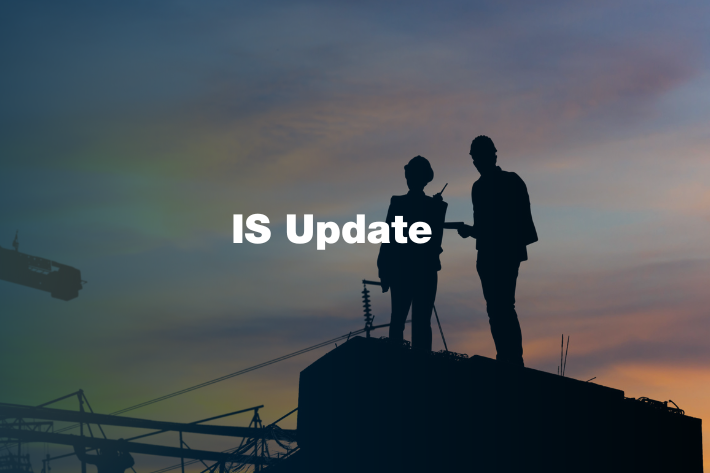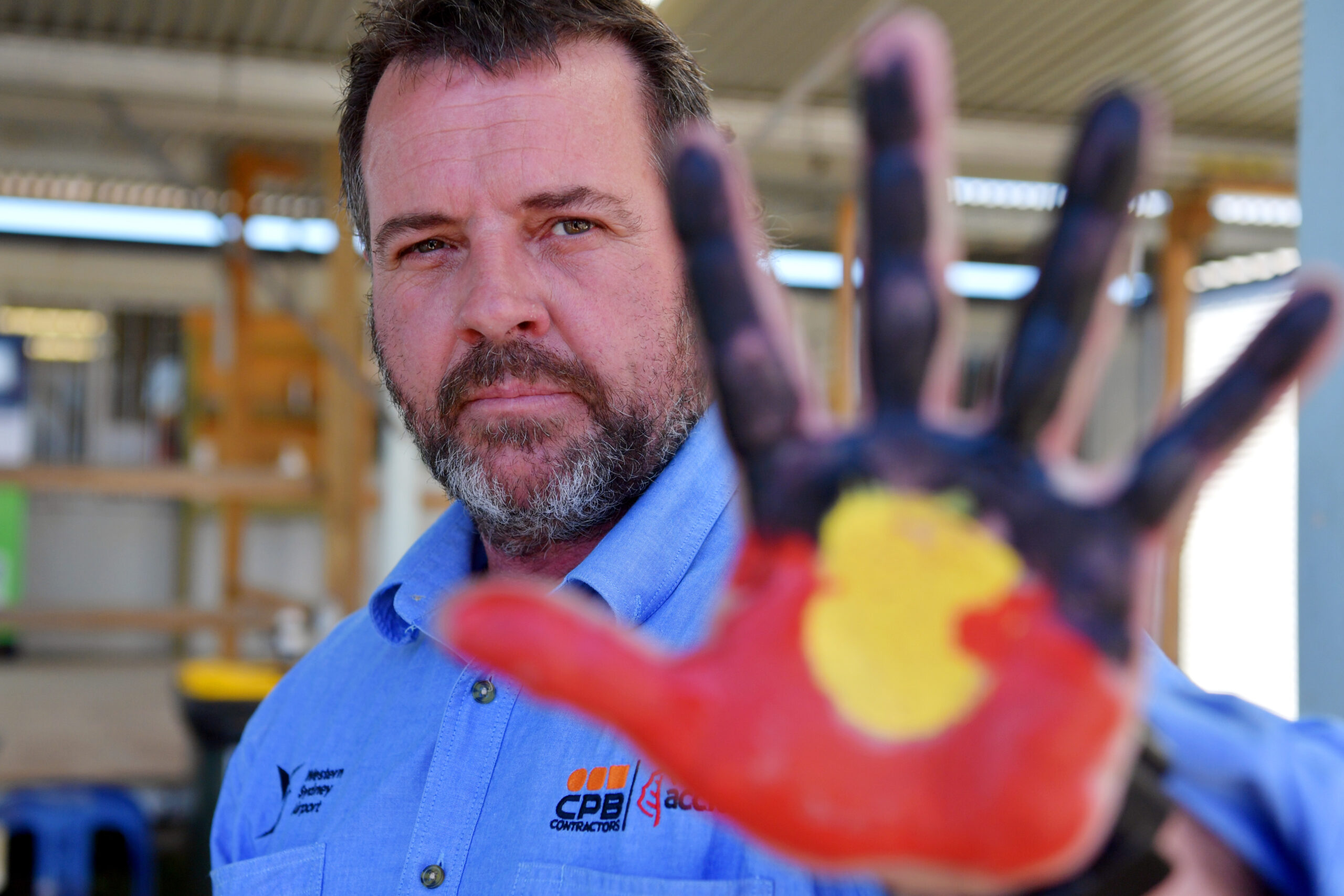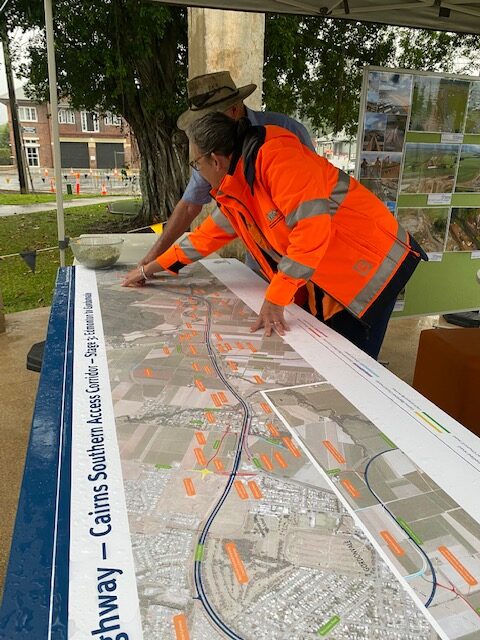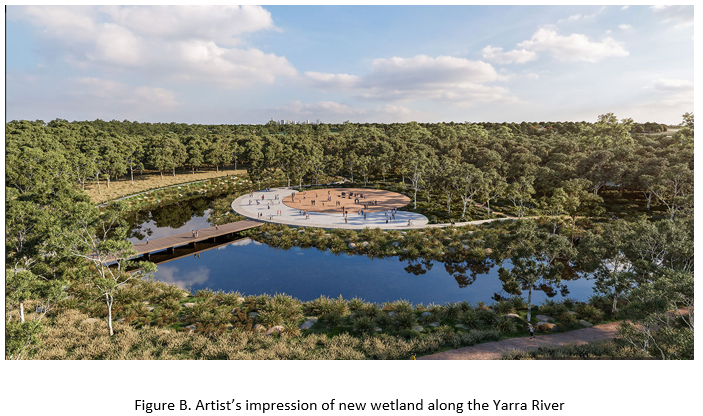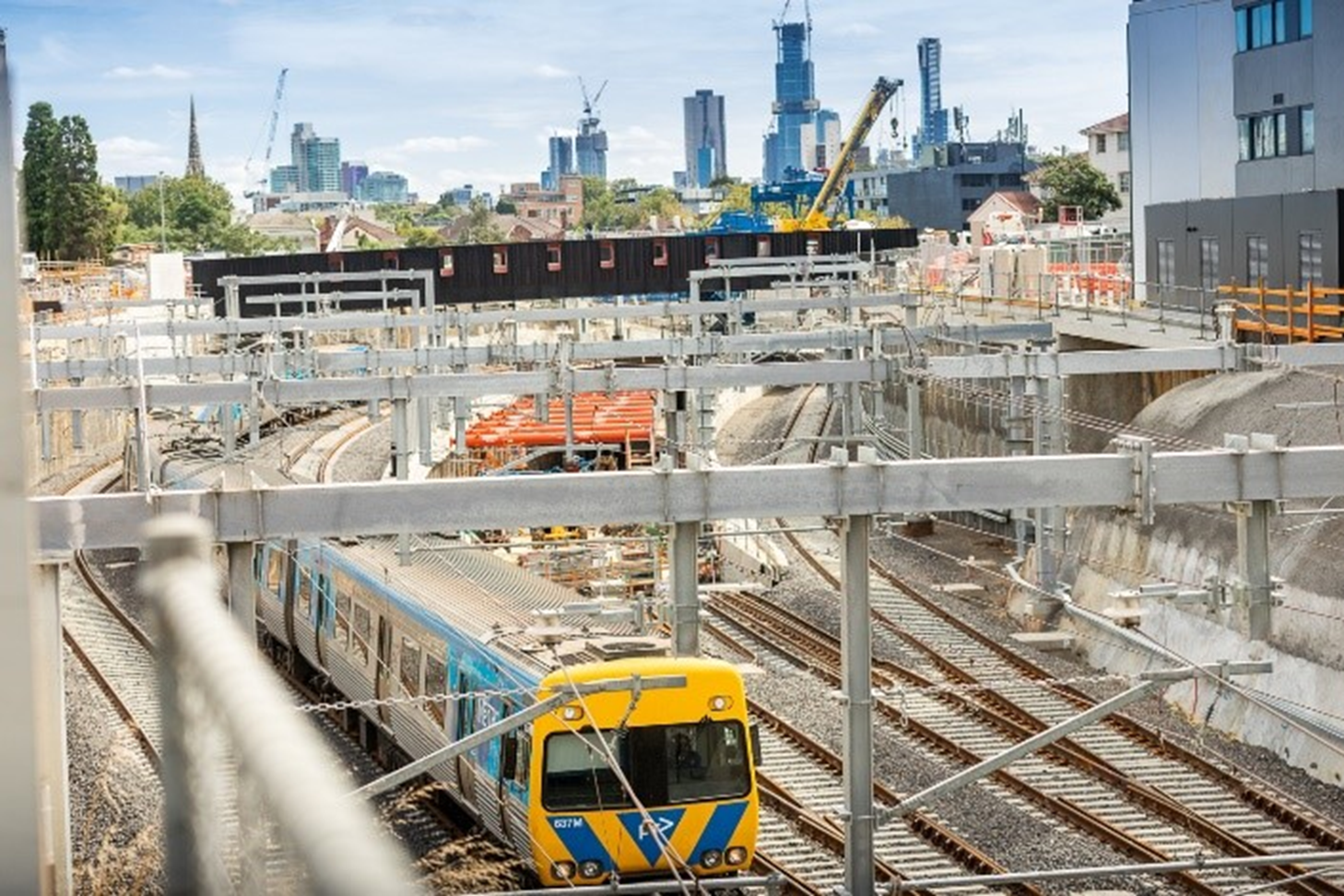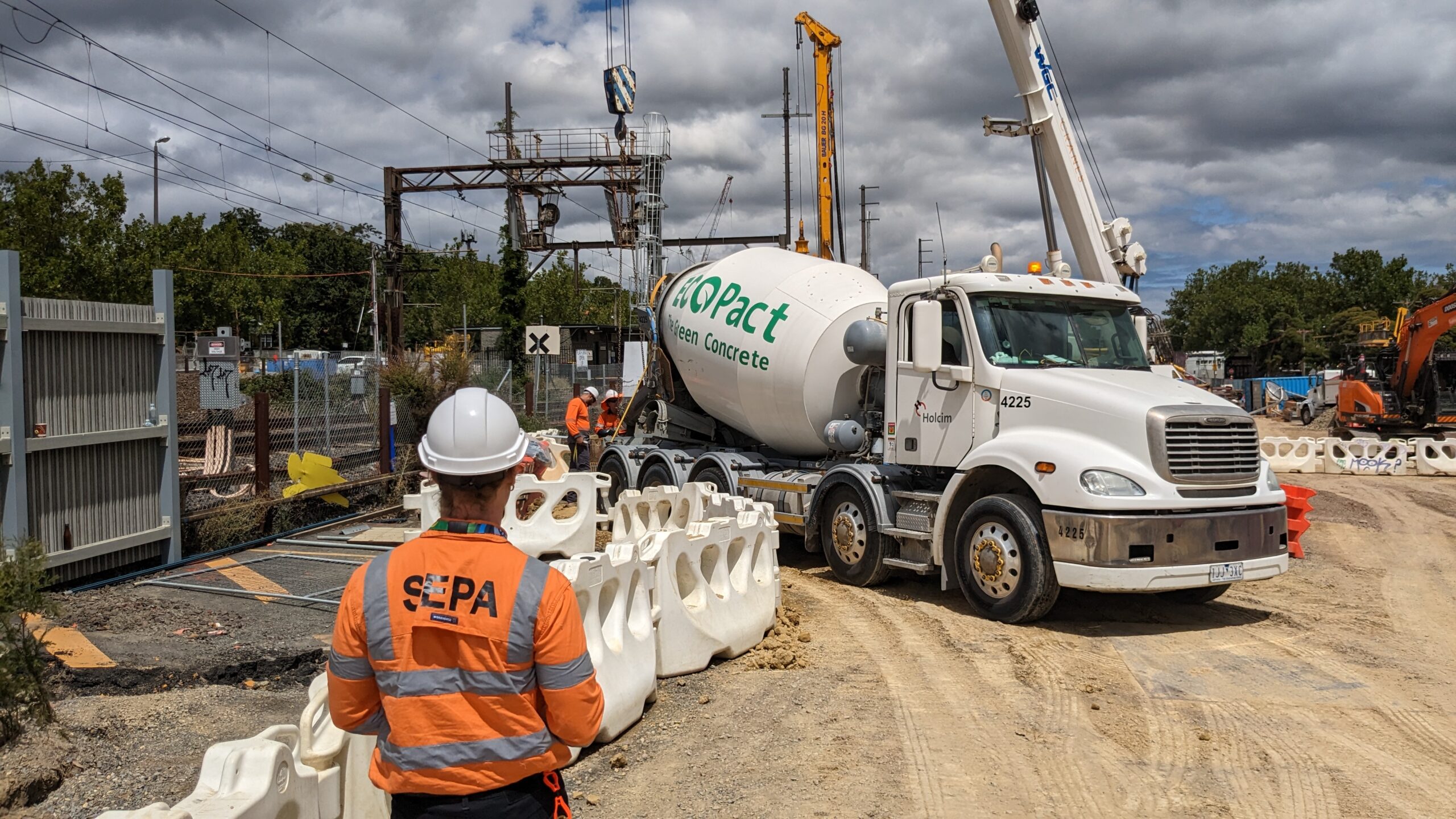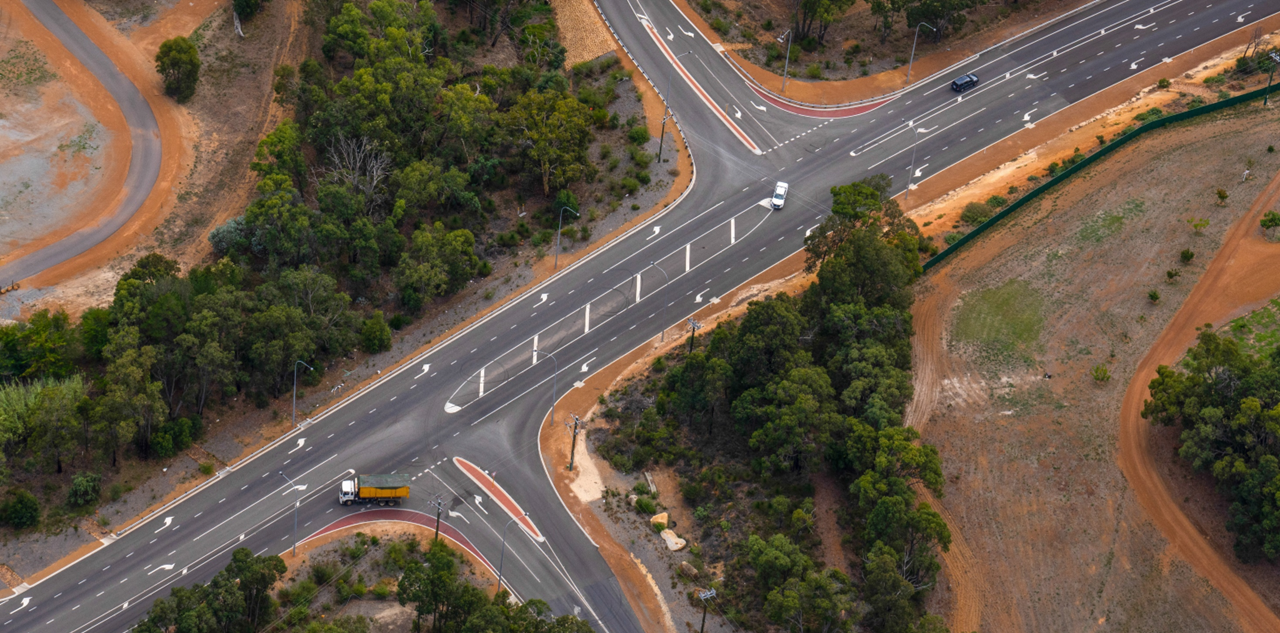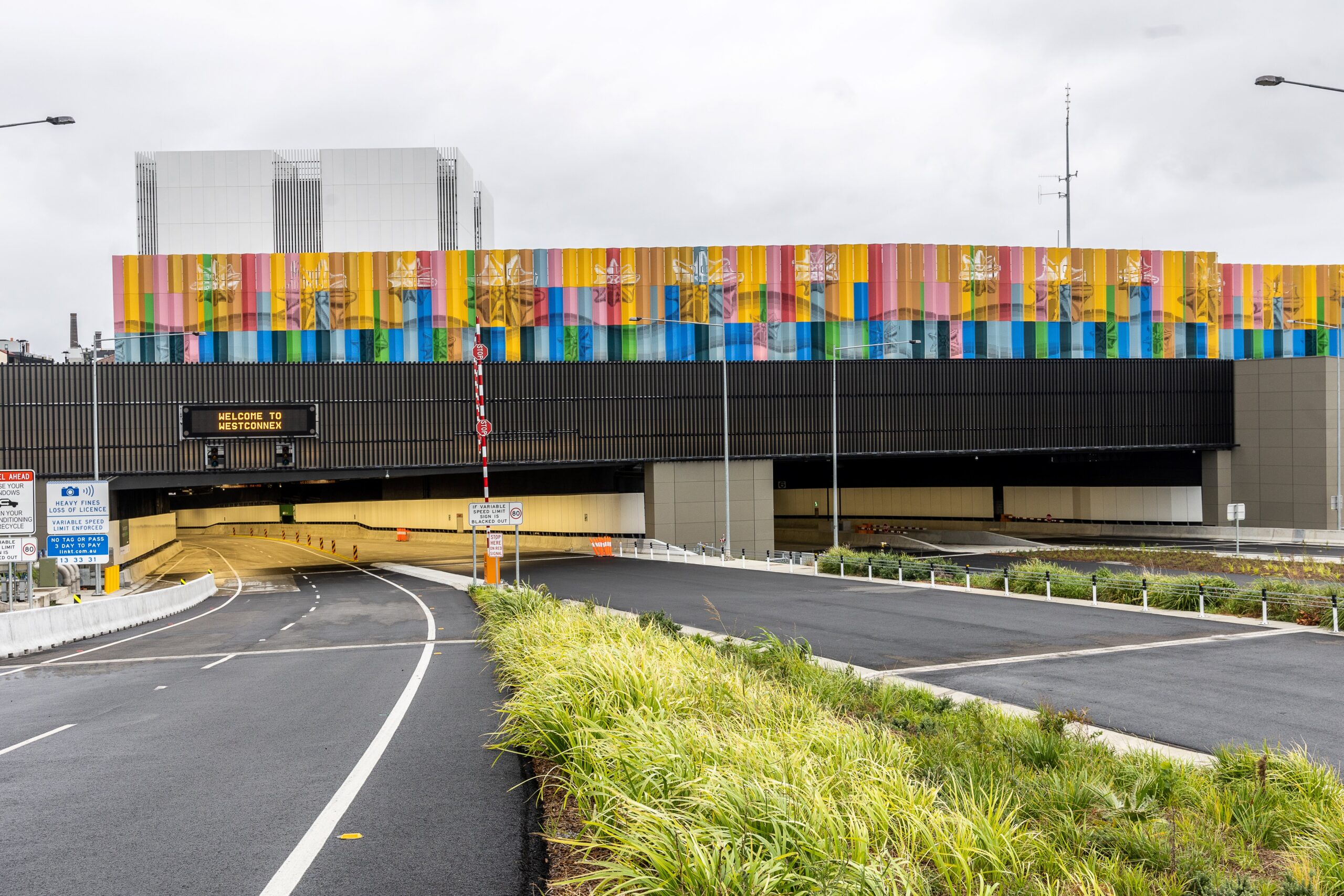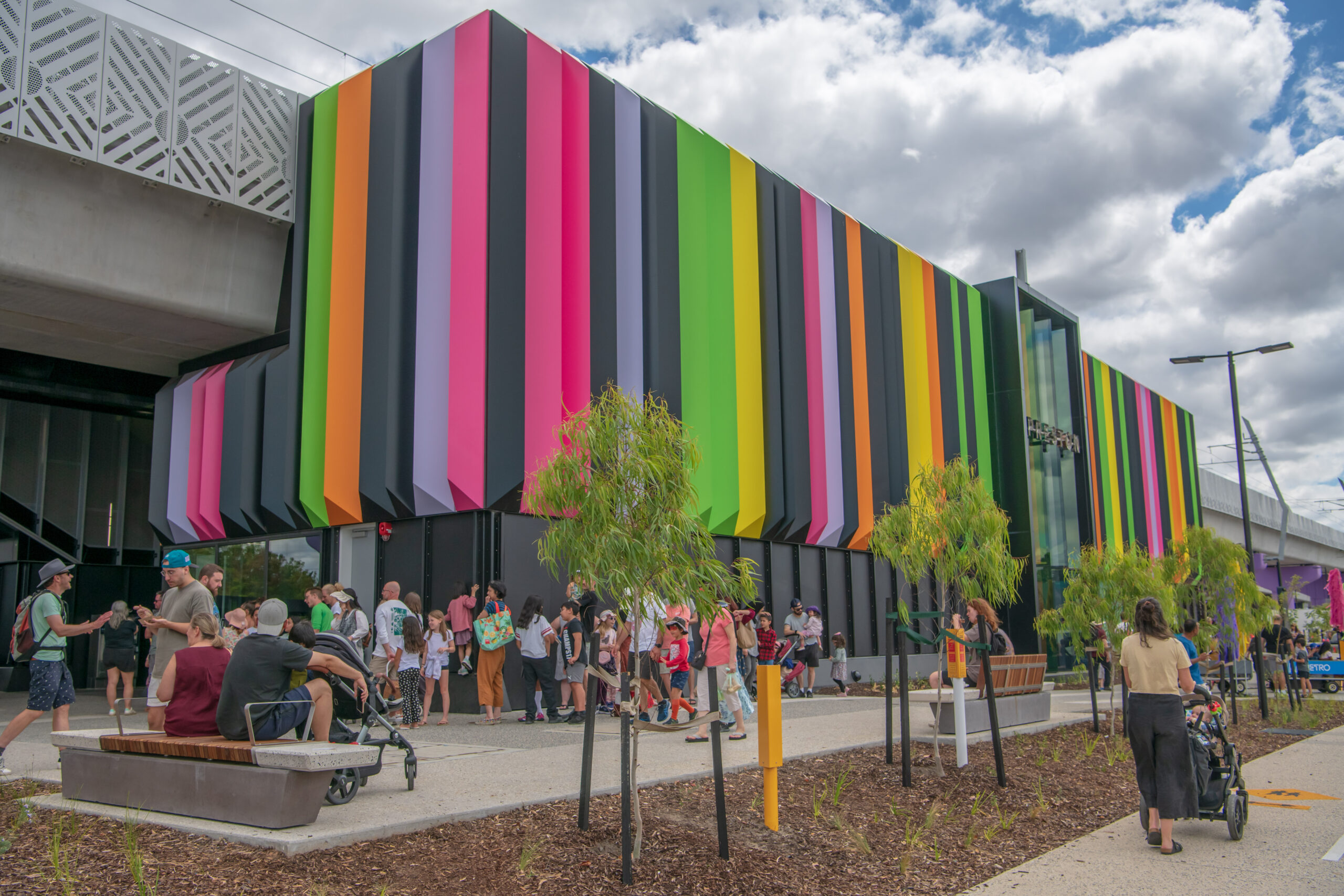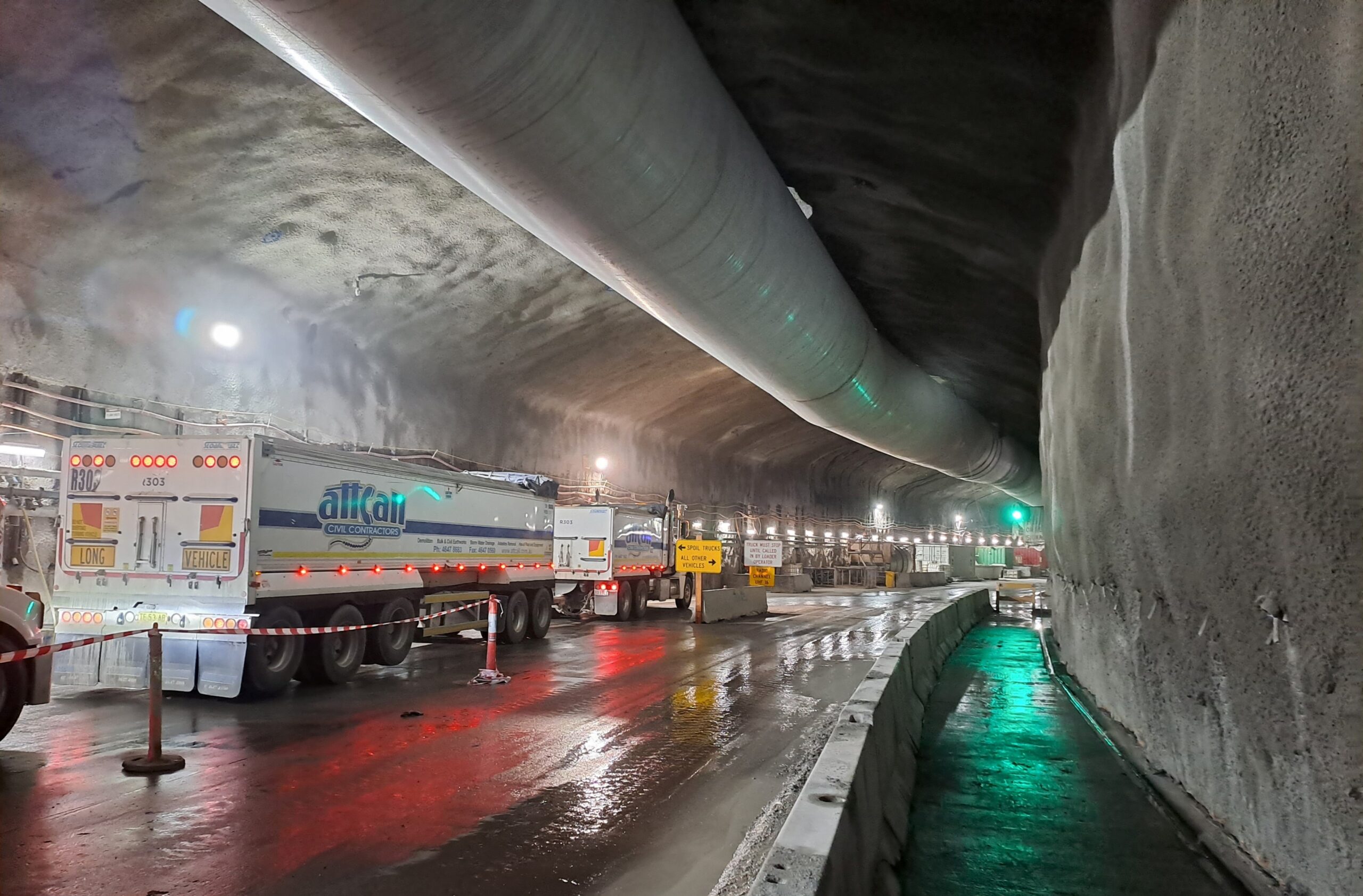Describe WHAT you have done and HOW you have done it.
Victoria’s landmark Level Crossing Removal Project (LXRP) is removing 110 dangerous level crossings across Melbourne. In 2022, the North Western Program Alliance (NWPA) completed the Preston Level Crossing Removal Project (‘the Project’); a complex rail infrastructure upgrade that included the removal of four level crossings, construction of two kilometres of elevated rail viaduct, two new premium stations and precincts, as well as extensive open spaces in Melbourne’s inner north.
NWPA’s robust governance framework enabled the team to deliver a range of innovations and was key to optimising sustainable outcomes for the community, the LXRP program and the industry.
WHAT WE DID: THE ALLIANCE MODEL AND EMBEDDING SUSTAINABILITY EARLY
NWPA is comprised of LXRP as the client, and John Holland Group (principal contractor), Kellogg Brown & Root (designer), and Metro Trains Melbourne (network operator). This Alliance model embeds LXRP as a partner, which enables effective collaboration, to continually raise industry standards for sustainable infrastructure.
Early engagement and collaboration on the Project meant that NWPA was able to embed sustainability initiatives and processes in the development stages, rather than in the delivery phase, when the Project’s design and footprint is largely set. It allowed NWPA to effectively influence and shape outcomes, which delivered not only a built-to-standard project, but sustainable precincts that have improved quality of life outcomes for the Preston community.
HOW WE DID IT: NWPA’S GOVERNANCE PRINCIPLES
NWPA’s governance framework and the mechanisms outlined below, ensured alignment of values and objectives between all stakeholders, which informed the Project from the preparatory phases, through to completion.
-OPTIONEERING AND MULTI CRITERIA ANALYSIS (MCA): potential solutions were proposed and assessed as part of an extensive optioneering process. MCA determines not only whether an option is viable, but whether it holistically achieves the best outcome for all. The Project’s innovative and complex Single-Line Running (SLR) strategy resulted from this comprehensive process.
-PARTNERSHIPS AND COLLABORATIONS: early engagement with subcontractors enabled the Project to optimise capabilities and discover innovations.
-The successful implementation of Radiant Heat Curing (RHC) resulted from early collaboration with stakeholders, to
develop, test and gain approval.
-Engaging and collaborating with local Traditional Owners early, created a genuine partnership that ensured an authentic Indigenous design outcome.
-A CONTINUOUS IMPROVEMENT APPROACH: leveraging the power of an ongoing program of works, NWPA applies lessons learnt from previous projects, to continually target and adopt or adapt step-change innovations, which turns them into business-as-usual practice. For example, an Indigenous Design process was first implemented on the Bell to Moreland Project and was further refined for successful implementation on the Preston Project.
-EARLY ENGAGEMENT WITH COMMUNITY: to seek advice, preferences and solutions. For the Preston Project, this was in the form of The Preston Open Space Advisory Panel (POSAP) to ensure design outcomes were suited to the characteristics of the area and the needs of residents.
Since this Project, NWPA has successfully leveraged and further enhanced its governance framework to support the creation of sustainable infrastructure on the Pakenham and Keon Parade projects, currently in construction.
What were the OUTCOMES and how were those outcomes shared?
The Project delivered exceptional sustainability outcomes. It reduced energy emissions by 47%, materials emissions by 22%, created a 105% increase in ecological value designed for climate resilience, and delivered a sustainable precinct with 60,000m2 of new public spaces with parks, pedestrian and cycling paths, an amphitheatre, recreational equipment and yarning circle.
The Project’s governance framework was critical to success, enabling ideas to be heard, developed, and evaluated, realising these four initiatives:
SINGLE-LINE RUNNING (SLR):
Implemented for the first time in Victoria, the SLR strategy allowed the build of 2km of viaducts while minimising interruption to train services and commuters. It was a requirement to work within strict track occupation time limits and a lack of space within a narrow rail corridor. Through careful planning, this innovation kept trains running in both directions on one track, while viaduct construction occurred on the other track. This allowed:
-Reduced potential occupation time for construction of the second viaduct from 158 days to 40 days
-Reduced total hours of replacement buses for disrupted train services by an estimated 64%, or 11,998 hours.
-Reduced carbon footprint of bussing hours, a carbon reduction of 494.12 tC02-e.
RADIANT HEAT CURING (RHC):
NWPA partnered with subcontractor Civil Infrastructure Group (CIG) to develop a method of accelerating concrete curing times, allowing a rapid cast ‘in situ’ program. RHC enabled efficient and safe construction of the piers and crossheads required to support the viaducts, which removed the need to construct large concrete elements off-site, transport them to the project, and ‘heavy lift’ them into place. This innovative engineering solution reduced the overall carbon footprint of construction by:
-Avoiding increased cement content – the conventional method to increase curing speed.
-Reducing curing time from seven days to under 30 hours, representing a 45% reduction, or 1,900 curing hours saved, reducing the overall pier and crosshead construction process from two weeks to 3-4 days, also contributing to the reduced bussing hours described above.
-Reducing materials used: accelerated curing times meant fewer steel moulds were required overall.
-Reduced carbon impact of transporting and craning 80 X 100 tonne precast crossheads across the project.
This is the first infrastructure project in Australia to utilise this now patented innovation.
INDIGENOUS ENGAGEMENT AND DESIGN:
NWPA’s design team engaged the Wurundjeri People starting in the development phase, to ensure meaningful local Indigenous culture was authentically represented in the Project’s outcome. Face-to-face workshops with local Elders allowed the Project team to learn their stories and seek feedback on design concepts.
Collaboration with Traditional Owners at all stages resulted in strong cohesion of Indigenous design elements across the Project’s architecture, integrated artwork, landscaping, and wayfinding. The theme for the Project’s ‘Oakover Green’ space was the result of workshops with Wurundjeri Traditional Owners. The story of Baliyang the bat, creator of women, is depicted, creating a space for the Indigenous female voice. A yarning circle as well as native plantings and landscaping from Aboriginal-owned contractor Wamarra, interprets, enhances, and promotes cultural learning and knowledge sharing for the community.
LOCAL COMMUNITY DEVELOPED SOLUTIONS:
During the development phase, the Project created the Preston Open Space Advisory Panel (POSAP) to engage and empower community-nominated representatives, to better understand their wishes and needs, making it a truly collaborative effort. Three areas of open space were identified for the POSAP to provide their advice and preferences, which gave a sense of ownership and ensured areas of the design were inclusive and featured community-led solutions.
SHARING OUTCOMES:
It is NWPA’s aim to lead industry by showcasing sustainable solutions and lessons learnt. The Alliance model gives NWPA the ability to share outcomes with the wider LXRP program, including with other program alliances, and the wider rail and construction industry, through:
-Showcasing our governance processes that drive innovation and meaningful change. In 2022, this included the ISC NZ Conference, Australasian Railway Association (ARA) National Rail Sustainability Conference, an AustRoads seminar and the ARA AustRail conference.
-Publishing of NWPA’s Annual Sustainability Report, detailing case studies and sustainability outcomes achieved. The 2022 report will be available on the public LXRP website in August 2023.
-Partnering with subcontractor CIG, who has now patented the RHC technology and are driven to share this solution to all potential clients across the industry.
Describe WHO benefited from your initiative, innovation, or approach?
Overall, the Project delivered a complex rail infrastructure upgrade using sustainable construction strategies, and revitalised a precinct through a suite of sustainable and inclusive innovations that leave a lasting legacy.
The Project benefited Preston residents and business owners, a range of community stakeholders and the wider construction industry.
COMMUNITY:
Improving the community’s quality of life was at the forefront of our thinking. The Project achieved the following outcomes for Preston:
-Spaces designed by community, for community: NWPA consulted local business and community interest groups to design a precinct of connected public amenities that met community needs and reflected the characteristics of the area.
-The creation of sustainable community spaces: through elevating the rail, 60,000m2 of new, connected open space was created, featuring parks, bicycle and pedestrian pathways, an amphitheatre, recreational equipment, yarning circle, and barbecue area.
-Celebration of Indigenous culture: supported reconciliation and sharing of cultural knowledge through authentic engagement and collaboration with Traditional Owners to represent local Indigenous culture in the new community spaces.
-Improved access and safety: enhanced safety and accessibility to Preston and Bell stations on one of Melbourne’s busiest public transport routes to and from the CBD, supporting more than 200 trains a day.
-Minimised impact to community and rail network: minimised impact to roads and public transport network and avoided some property acquisitions through the innovative SLR construction strategy.
SOCIAL ENTERPRISES
The Project significantly contributed to equity, diversity and inclusion in rail and construction. Through this Project, NWPA and its subcontractors created 487 jobs, including 133 apprenticeships. The Project also engaged 25 Indigenous-owned Businesses (total spend $28 million) and engaged 22 Social Enterprises (total spend $1.28 million).
INDUSTRY
Our practices on this Project supported the development of our subcontractors’ capabilities and contributed to the wider LXRP program by furthering the state of knowledge in sustainability in the construction industry:
-NWPA uses its buying power to support sustainability solutions. We optimise subcontractor forums to inspire strategic procurement, and work with suppliers to encourage communication with their networks. We support subcontractors through innovation showcases and conferences to promote their solutions to other alliances and the wider industry. For example, CIG’s RHC innovation is now patented and in use across the industry.
-NWPA has advocated and shared lessons for embedding sustainability in development with infrastructure clients in Victoria and nationally. Through providing outcomes-based evidence, NWPA is supporting infrastructure proponents to enhance tendering practices that embed sustainability early.
What LEGACY and UN SDG CONTRIBUTION was achieved?
LXRP and NWPA’s Sustainability Strategy aims to deliver transport infrastructure that is climate resilient, promotes human wellbeing and inclusivity, and increases our resource use efficiency. The initiatives highlighted in this submission address eight UN SDGs and are measured, tracked, and publicly reported to drive improvement for each project.
This Project advanced the following SDGs:
-SDG 3: Good Health and Wellbeing (through reducing road injuries by removing level crossings)
-SDG 7: Affordable and Clean Energy (17% increase in renewable energy through 90kW solar system and 47% overall energy reduction)
-SDG 8: Decent Work and Economic Growth (through social enterprise engagement and diverse employment)
-SDG 9: Industry, Innovation and Infrastructure (through sustainable governance and innovative engineering solutions)
-SDG 10: Reduced Inequalities (through the creation of equitable, inclusive public spaces and facilities)
-SDG 11: Sustainable Cities and Communities (through resilient, inclusive and sustainable urban design)
-SDG 12: Responsible Consumption (through 22% materials embodied carbon reduction, sustainable procurement practices and annual reporting)
-SDG 15: Life on Land (through 105% enhancement of ecological value)
URBAN DESIGN LEGACY
The Project’s new urban precinct enhanced sustainability in the wider community through:
-Fostering a culture of collaboration to realise engagement strategies that develop community led solutions.
-Enhancing human interaction and experiences with nature, which builds affinity and appreciation for the environment.
-Bringing Indigenous culture and knowledge to the forefront of design, which supports reconciliation and encourages the perception of urban spaces embedded in a wider cultural context.
-Encourages and enables active transport, specifically cycling and walking, which reduces transport emissions and helps create community resilience through better health outcomes.
INNOVATION LEGACY
For innovations to have a legacy, they must be shared and reused until they become conventional solutions. NWPA uses awareness and knowledge sharing campaigns, including lessons learnt, to promote innovations widely, so that they can be adopted or adapted on current and future NWPA and LXRP projects. For example, the Preston Project’s SLR approach and RHC innovations as well as Indigenous Design outcomes, have been endorsed for reuse on other NWPA and LXRP projects, and the SLR concept has been built upon at Keon Parade LXRP, continuing our approach of leveraging our proven solutions.
NWPA has presented innovations at showcases and conferences to support better sustainable practices throughout the rail and construction industry. For example, we have recently presented CIG’s recently patented RHC innovation to industry at a virtual conference, and it has been adopted on two other projects by other alliances.
GOVERNANCE LEGACY
The governance processes in place today will continue to evolve. Rather than setting how we govern in stone, NWPA’s approach is to continually improve, to ensure we are at the forefront of sustainable innovations in the infrastructure sector, through embedding sustainability in projects, such as Preston, as early as possible.
As an organisation we remain open to disrupting the status quo, by changing how and why we do things in the interests of sustainability within the infrastructure industry.
In 2021, the role of Strategic Procurement Manager was created, to focus on the sourcing of sustainable materials and innovative subcontractors, and to support diversity by engaging social enterprises and Indigenous-owned businesses.
In 2023, NWPA promoted its Sustainability Manager to Director Transformation and Sustainability, to ensure sustainability is represented at all key strategic decision-making gates and drive our team to continually strive for transformational change towards sustainability.
While the Preston Project is within the niche of public rail infrastructure, the principles of embedding sustainability early into project development, partnering designers and contractors with infrastructure proponents to realise exceptional sustainability outcomes, can be adapted to any greenfield development, brownfield development, and urban renewal projects.

